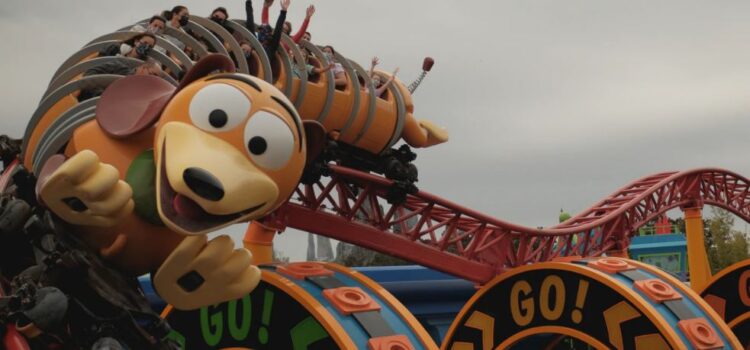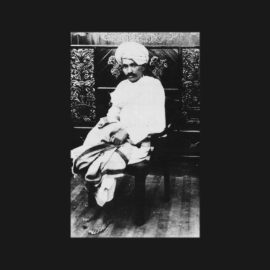

This article is an excerpt from the Shortform book guide to "The Ride of a Lifetime" by Bob Iger. Shortform has the world's best summaries and analyses of books you should be reading.
Like this article? Sign up for a free trial here .
How and when did Disney buy Pixar? Why was Disney’s CEO Bob Iger so adamant on making the deal?
In 2005, Disney was struggling. It had not released any blockbuster titles in years and was being outshined by other studios. Bob Iger had only just been named CEO but he knew that in order for Disney to thrive, it would have to take some huge risks. That’s why Disney bought Pixar.
Keep reading to learn about Bob Iger’s fight when Disney bought Pixar.
How Disney Bought Pixar
At the end of September 2005, Michael Eisner had his last day at Disney. A few days later, Bob Iger officially became only the sixth CEO of Disney.
Iger’s first priority was to resuscitate Disney Animation. The failure of the department to generate new hit movies was a big contributor to Disney’s financial malaise. Over the past decade, they had only produced lukewarm movies—The Hunchback of Notre Dame, Mulan, Lilo and Stitch—a far cry from the iconic early 1990s blockbusters The Little Mermaid, Aladdin, The Lion King, and Beauty and the Beast. Over the past decade, Animation spent over a billion dollars making films but lost nearly $400 million.
Beyond their financial difficulties, Disney was losing ground with its core consumers. Iger asked his deputies to do market research on how their key demographic, mothers with children under twelve, felt about Disney relative to other competitors. The results were depressing: Pixar had overtaken Disney as “good for their family” and was the more beloved brand. No surprise—Pixar had recently produced the hits that Disney couldn’t, like Toy Story, Monsters Inc., and Finding Nemo.
If Disney couldn’t produce beloved content, all the other engines of the business would fail, such as consumer products and theme parks.
In this environment, Iger thought of four possible paths:
- Keep the current management and hope they’d work it out. Given their poor track record, Iger was pessimistic about this option.
- Find new talent to run Disney Animation. Iger had scouted for talent who could do this, but he didn’t find anyone he believed in.
- Work out a deal with Pixar. If Pixar could keep making hit films, a good deal would let Disney share in their success. But Iger had tried this route for months with no success. Steve Jobs knew he had the upper hand and demanded extreme terms, like ownership over future films and previously developed films. Iger couldn’t accept these responsibly on Disney’s behalf.
- The most extreme option: Disney buys Pixar outright. Pixar would inject Disney with the creative energy they needed, and owning Pixar would give total ownership over the content.
Iger knew Disney buying Pixar was a crazy option, and his deputies told him so. There were many reasons: Steve Jobs owned half of Pixar’s stock and was stubborn; he loved Pixar, and he had such a rotten experience with Eisner he wouldn’t possibly sell to Disney; even if he did, he had so much leverage he’d ask for a skyhigh price (the market capitalization of Pixar then was about $6 billion); ultimately, the risk would be too great and the board and shareholders would never go for it.
Still, Iger felt this was the right move. His wife Willow had told him that the average tenure of a Fortune 500 CEO was 4 years. The point was that he had little to lose with taking big risks, and little time to do it.
For his first board presentation as CEO, he focused on all of the above: the crippled state of Disney Animation, Disney’s loss of brand loyalty, and the various options they had. Then he pitched his final option: if Disney bought Pixar. The room nearly exploded. They gave all the usual reasons it wouldn’t work and tried thinking of alternatives, but ultimately they recognized there might be some fruit in the idea. They gave Iger permission to explore the idea further.
At this point, Iger merely had an idea; now he had to execute it. In sum, he would have to convince three key sets of people, in sequence:
- Steve Jobs
- Pixar’s chiefs, John Lasseter and Ed Catmull
- The Disney board
Convincing Steve Jobs
Iger thought Steve Jobs might be the hardest challenge, and there was a chance he’d simply nip the entire deal in the bud. The day after the board meeting, he was on a call with Jobs about the video iPod, which they were due to announce in about a week. Iger said he had a crazy idea he wanted to run by Jobs and asked to fly up to introduce it. Jobs, who liked hearing crazy ideas, asked to hear it right then.
Iger wondered aloud what Jobs thought about the idea of Disney buying Pixar. Jobs was quiet for a moment, and Iger expected him to burst out into laughter or into an angry tirade. Instead, Jobs replied it wasn’t the craziest idea in the world.
A few weeks later, Iger met with Jobs at Apple in a conference room with a long whiteboard. On the board, Jobs wrote “Pros” and “Cons” and tasked them both with filling them in. To the Cons list, Jobs added concerns like the death of Pixar’s creativity, burning out John and Ed, and the opposition of Wall Street and the board. To the Pros, Iger volunteered that Pixar would save Disney and “we’ll all live happily ever after.”
A few hours later, they had a long list of Cons, and scanty Pros. Iger was dejected, but Jobs seemed nonplused. To Jobs, a few big Pros outweighed dozens of minor Cons.
The deal was far from over, but Jobs didn’t shoot it down immediately like Iger had feared. Iger thought a good next step would be to visit Pixar, where he’d be able to meet with both John Lasseter and Ed Catmull, Pixar’s leaders. Jobs made clear that he was committing to nothing and that he’d never sell Pixar without John and Ed onboard, but he immediately agreed to a visit.
Convincing John Lasseter and Ed Catmull
The following week, Iger visited the Pixar office. Iger was excited to learn how Pixar made its magic. He wanted to meet the people working there, feel their culture, and understand their technology.
Iger was warmly greeted by John and Ed. John Lasseter was the creative head of Pixar and oversaw its films. Ed Catmull was the technology head of Pixar and oversaw the computing resources that made their animation work. Iger’s visit would consist of visiting each person’s domain.
First, with Lasseter, Iger got a preview of every movie they were working on. He saw works in progress for Cars, Ratatouille, Wall-E, Up, and Brave, all of which would be commercial and critical successes. Iger was blown away with the narrative authenticity of each project and the quality of the animation.
Next, with Catmull, Iger got a tour of the technology side that powered the movies. The creative team and engineers worked in harmony—the creative team would challenge engineers to create tools that made their visions real, while the engineers would come up with new tools (like a new way to render snow) and ask the creative team what they could do with it.
Finally, as Iger toured the campus, he felt a giddy creative energy buzzing throughout the campus and the employees. Everyone seemed happy to be working at Pixar. Even the space was designed to improve creativity—wide open areas let groups mingle, like in a university.
After his visit, Iger knew Pixar was magical, and if Disney bought Pixar, it would be transformative. Iger called Jobs and breathlessly described how amazing Pixar was and how eager he was in making the transaction work. Standard negotiation practice suggests you should make the other side think you don’t want them all that much; Iger couldn’t help being honest and enthusiastic. In response, Jobs reiterated that a deal would only happen if Lasseter and Catmull were on board, and he arranged for Iger to meet with them.
In the following week, Iger met with both Lasseter and Catmull. He knew that both people loved Pixar and were wary of Pixar losing its soul, regardless of how much money they could make in a sale. Iger knew how they felt—he had been through multiple acquisitions himself, first by Capital Cities, then by Disney. Iger’s message to both was the same—Pixar was magic, and Disney knew it. The goal of Disney buying Pixar was to power Disney’s creative products; if Disney destroyed what made Pixar work, the deal would be worthless to them. Iger committed to protecting Pixar’s culture.
Iger made another irresistible offer—Lasseter and Catmull would both run Disney Animation. Lasseter had started his career as an animator at Disney, before being fired for pushing computer animation in its early days. To return in a triumph and run the legendary department would be a dream.
Negotiating the Deal
The day after, Jobs called Iger and said Lasseter and Catmull were onboard to sell. Iger met with his board and got permission to start negotiations, though they were still skeptical of the deal’s closing.
Iger met Jobs at Apple to negotiate the deal. He knew that Jobs was intolerant of long, drawn-out processes, particularly with Eisner, and he signaled that he was different. He made clear that he wanted to make the deal happen, and they’d try to make it as straightforward as possible. Jobs seemed to respond to this honesty well, and he didn’t invoke his leverage as a weapon like before.
Over the following month, Jobs and Disney’s CFO worked out a deal—an all-stock transaction worth $7.4 billion, exchanging 2.3 Disney shares for each Pixar share. It was a high price, but not unfairly so. In addition to negotiating price, Disney promised to keep Pixar’s culture intact through a list of specific items, and they agreed on branding joint features as Disney-Pixar.
The deal was now nominally set to go. Iger had one last challenge—convincing the board.
Convincing the Board
Disney’s board was still skeptical, and Iger had to give it his best shot. He knew that the best way to persuade them was to have Jobs, Lasseter, and Catmull talk to the board directly.
In January 2006, the board, the Pixar trio, and Iger met in a Goldman Sachs conference room in Los Angeles. There were no slide decks; each member of Pixar simply shared their vision for the partnership. Lasseter shared his childhood love of Disney and his desire to take Animation to new heights. Catmull shared the future of technology and the cutting-edge work they could achieve together. Jobs emphasized the need for big companies to take big risks, and that Disney needed to make big moves like this to stay relevant. Initially skeptical, the board started turning around; Pixar’s enthusiasm was infectious.
The board was set to take a final vote a few weeks later. In the interim, the news of the deal leaked, and they started getting detractors in the press. Irritatingly, former CEO Michael Eisner lobbied against the transaction. He called Iger and urged him not to take the deal, for all the same reasons—Jobs would undermine Disney, it was too expensive, Iger could fix Animation himself. Eisner even called the board chairman and asked to speak at the final vote; Iger hated this idea but begrudgingly agreed, thinking that it’d be better to rebut his concerns directly instead of having Eisner wage a campaign outside.
At the final vote, Eisner spoke and aired his doubts. Then it was Iger’s turn. He was counseled by the chairman that it wasn’t a done deal, and he had to pitch his heart out one last time. Iger went in and argued as passionately as he could for the deal. Disney lived and died with its animation. The future of Disney was “right here, right now.” The board had the future life of Disney in its hands, and it needed to make the right step to the future.
The board took a vote, and the deal passed—nine members for, and two against. Just a few months into his new job as CEO, Iger had made a massive bet on the company. His future would be defined by this decision.
Announcing the Deal
The day of the announcement, Iger was at Pixar headquarters.
An hour before the announcement, Jobs asked Iger to take a walk with him. Surprised at the timing, Iger thought Jobs was going to back out of the deal or push for a better deal. Instead, Jobs put his arm around Iger, asked him for confidentiality, then revealed what was then a secret to the world—his pancreatic cancer was back. He was going to fight it as best he could and try to make it to his son’s high school graduation in 4 years. But if Iger wanted, he could back out of the deal.
Iger was caught completely off-guard, and he found it difficult to absorb the emotional weight while thinking pragmatically about the business. Ultimately, he decided Jobs wasn’t critical to making the partnership work, and that calling the deal off now would be inexplicable to the board.
They announced the deal later that afternoon. It was a bittersweet moment, but Iger looked ahead to what Disney and Pixar could accomplish together. That is the story of how Disney bought Pixar.

———End of Preview———
Like what you just read? Read the rest of the world's best book summary and analysis of Bob Iger's "The Ride of a Lifetime" at Shortform .
Here's what you'll find in our full The Ride of a Lifetime summary :
- How Bob Iger went from television crew member to CEO of Disney
- The 10 major principles behind Iger's management style and success
- How Iger resuscitated Disney Animation by buying Pixar






